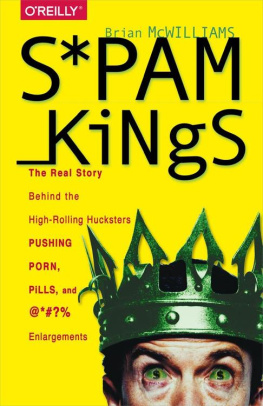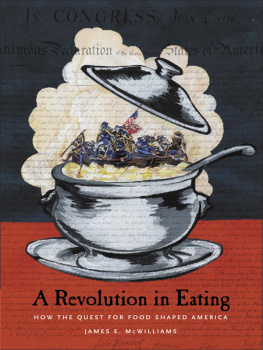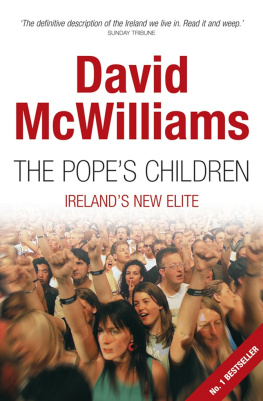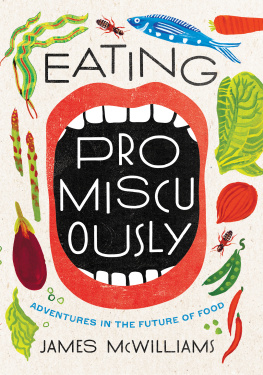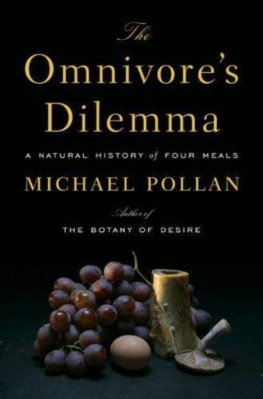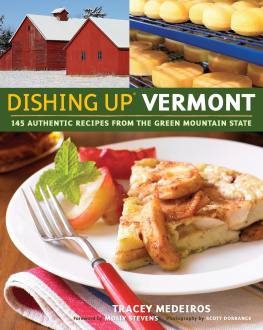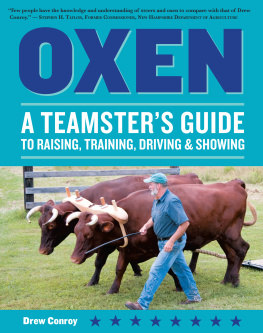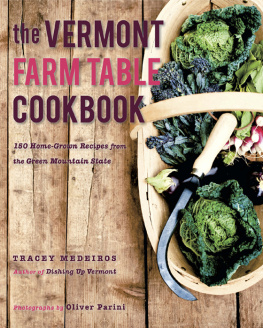McWilliams - The Politics of the Pasture : How Two Cattle Inspired a National Debate about Eating Animals.
Here you can read online McWilliams - The Politics of the Pasture : How Two Cattle Inspired a National Debate about Eating Animals. full text of the book (entire story) in english for free. Download pdf and epub, get meaning, cover and reviews about this ebook. City: New York, Vermont., year: 2013, publisher: Lantern Books, genre: Politics. Description of the work, (preface) as well as reviews are available. Best literature library LitArk.com created for fans of good reading and offers a wide selection of genres:
Romance novel
Science fiction
Adventure
Detective
Science
History
Home and family
Prose
Art
Politics
Computer
Non-fiction
Religion
Business
Children
Humor
Choose a favorite category and find really read worthwhile books. Enjoy immersion in the world of imagination, feel the emotions of the characters or learn something new for yourself, make an fascinating discovery.
- Book:The Politics of the Pasture : How Two Cattle Inspired a National Debate about Eating Animals.
- Author:
- Publisher:Lantern Books
- Genre:
- Year:2013
- City:New York, Vermont.
- Rating:5 / 5
- Favourites:Add to favourites
- Your mark:
- 100
- 1
- 2
- 3
- 4
- 5
The Politics of the Pasture : How Two Cattle Inspired a National Debate about Eating Animals.: summary, description and annotation
We offer to read an annotation, description, summary or preface (depends on what the author of the book "The Politics of the Pasture : How Two Cattle Inspired a National Debate about Eating Animals." wrote himself). If you haven't found the necessary information about the book — write in the comments, we will try to find it.
The Politics of the Pasture : How Two Cattle Inspired a National Debate about Eating Animals. — read online for free the complete book (whole text) full work
Below is the text of the book, divided by pages. System saving the place of the last page read, allows you to conveniently read the book "The Politics of the Pasture : How Two Cattle Inspired a National Debate about Eating Animals." online for free, without having to search again every time where you left off. Put a bookmark, and you can go to the page where you finished reading at any time.
Font size:
Interval:
Bookmark:
2013
Lantern Books
128 Second Place
Brooklyn, NY 11231
www.lanternbooks.com
Copyright 2013 James McWilliams
All rights reserved. No part of this book may be reproduced, stored in a retrieval system, or transmitted in any form or by any means, electronic, mechanical, photocopying, recording, or otherwise, without the written permission of Lantern Books.
Cover Image by Ilana Panich-Linsman.
Printed in the United States of America
Library of Congress Cataloging-in-Publication Data available
For MJ
Why Bill and Lou?
Green Mountain College is nestled in the tiny Vermont town of Poultney. It's a unique place, describing itself as an environmental liberal-arts college that takes the social and natural environment as [its] unifying theme.
Coursework at GMC centers as much on outdoor as indoor education. Students are more likely to become fluent in the politics of recycling than the poetics of Aristotle. If there's a single word defining this campus, it is sustainability, a word that unifies the customary fragmentation of campus life. Sustainability is, in essence, the inspirational glue that holds GMC into a coherent and functioning whole.
The quest to live sustainably underscores the entirety of GMC's curricula. The school takes pride in its assessment by Outside magazine as an institution where a course description might read, Students will learn the fundamentals of running international mountaineering expeditions.
One student gives the following advice to prospective applicants: If you like outdoor recreation, skiing/snowboarding, folk music, picturesque New England, farming, environmental advocacy, social justice, health food, long skirts, Carhartt overalls, and lots and lots of snow, GMC might be a good fit for you.
Student life reflects this recreationally enriched approach to higher education. Explains one first-year female: There is an unofficial streaking team, people are allowed to be barefoot pretty much everywhere, and there are chickens running free around campus, and cats who occasionally sneak into the classrooms. She continues: We are known for having a lot of stoners and hippies here.
Another student, a third-year female, highlights a frustrating aspect about the student body at GMC: There is... a big gap between the type of students GMC wants to attract and who it actually attracts. The staff and administration want to attract progressive-thinking, liberal-minded folks who really want to help the environment and promote social justice. Often, though, it attracts a lot of trustafarians and crunchies who prefer to smoke a lot of pot and wear hemp clothes.
#
One need not be a cynic to suggest that GMC's eco-focus is as much a revenue-generating ploy to attract such trustifarians as an authentic quest for educational excellence. A few key stats to consider: the acceptance rate at GMC is 72 percent;
Nonetheless, nobody at GMC really seems to mind. With fewer than 700 undergraduates and about 100 graduate students, GMC is decidedly a tight-knit community. It's a place where, according to one student, everybody knows everybody.
GMC has been around a long time (it was founded in 1834), but chances are pretty good that, unless you live in Vermont or another part of New England, or are a college counselor at an elite college prep school, you've never heard of it. For the most part, it's a quiet enclave of happy and wealthy and mostly white undergraduates who seem as content as could be inside their cocoon of bucolic bliss, isolated from concerns beyond its borders, accustomed to doing whatever it is they want to do.
#
All this quietude and complacency came to an abrupt end on October 1, 2012. It was then that Green Mountain College exploded viral-like into the national media. This instant notoriety didn't come from a sordid sex scandal or an egregious case of economic corruption or a campus tragedy involving a firearm. Instead, Green Mountain College momentarily became the most controversial institution of higher education in the nation because of two eleven-year old oxen named Bill and Lou.
The once sleepy campus suddenly found itself at the epicenter of the most intense public debate about animal rights since the publication of Peter Singer's Animal Liberation in 1975. It did so, moreover, because the school chose to do exactly what's done to millions upon millions of animals every year: kill and eat them. This is a story about what happened when GMC's decision to slaughter two oxen went public and the public responded.
As GMC saw it, the choice to kill Bill and Lou made perfect sense. It was a lesson consistent with the school's environmental curricula. Bill and Lou had worked hard on the campus's working farmCerridwen Farmfor over a decade. They plowed fields, generated a bit of electrical power, provided free fertilizer, and served as photogenic proof of the school's commitment to eco-agrarian values. In exchange for their services, the oxen enjoyed lush pastures and warm barns, as well as an outpouring of affection from students who, once the yokes were hoisted off the animals, lavished them with love.
But Lou had hurt his rear leg in the late spring of 2012by stepping in a hole while plowingand Bill adamantly refused to work without Lou at his side. Something had to be done; something educational and practical and regenerative; something decisive and gutsy and rock-ribbed. Something that yielded a tangible product and stressed exactly what GMC was all about: sustainability, self-sufficiency, and knowing where your food comes from.
So GMC decided to kill Bill and Lou. And eat them. In their own cafeteria. Indeed, in the name of ecological efficiency and a short-term supply of locally sourced burger meat, it was determined that the cycle of life would cease to spin for the oxen. To keep them alive, school officials claimed, would have been to waste resources by allotting food for animals unable to earn their keep. To kill and eat them, by contrast, would be a sober lesson in environmentalism.
Bill and Lou's death was considered essential to the whole notion of regenerative agriculture, the kind that a whole movement tells us would evidently reform our broken food system, restore dignity to the production of animal products, and confirm GMC's passionate devotion to its foundational idea of sustainabilitythe idea upon which it rebuilt its entire educational mission when it reinvented itself in the late 1990s as a school equally dedicated to the barnyard as the lecture hall.
Other groups saw the decision to kill Bill and Lou in a different light. To a vocal minority of activists outside the GMC community, there was something fundamentally wrong with the decision to kill the oxen. Advocates for animal rights, as a rule, believe that it's ethically unacceptable to raise, exploit, and slaughter a sentient animal if doing so can in any way be avoided (which, in modern society, it almost always can be). Most of these animal lovers believed it was wrong for the oxen to have been laboring on the farm in the first place, yanking around a plow as if it were the seventeenth century, adding little more than an aesthetic sheen to the GMC image and virtually nothing to the world at large.
But here's the hard thing that animal advocates must accept on a daily basis: with 10 billion animals raised, exploited, and slaughtered annually in the United States alone, it's virtually impossible to individualize the systematic and inherently depersonalized nature of animal exploitation. The vast majority of the violence endemic to animal agriculture is structurally and strategically hidden from view. Such is the burden for those who advocate for animal rights in the age of industrial production.
Hence the unique appeal of Bill and Loua couple of oxen at a small college in a rural town. They provided a perfect opportunity to help visualize what is so often hidden. They allowed activists to do something they are almost never able to do: individualize the collective nature of slaughter. Make it personal. Bill and Lou became every animal who suffers and is slaughtered for food we don't need. These were animals, after all, with their own names, photo albums, Facebook pages, and even a YouTube video tribute. They had a history, a story, and, perhaps most critically, an articulated fate that had yet to be executed.
Next pageFont size:
Interval:
Bookmark:
Similar books «The Politics of the Pasture : How Two Cattle Inspired a National Debate about Eating Animals.»
Look at similar books to The Politics of the Pasture : How Two Cattle Inspired a National Debate about Eating Animals.. We have selected literature similar in name and meaning in the hope of providing readers with more options to find new, interesting, not yet read works.
Discussion, reviews of the book The Politics of the Pasture : How Two Cattle Inspired a National Debate about Eating Animals. and just readers' own opinions. Leave your comments, write what you think about the work, its meaning or the main characters. Specify what exactly you liked and what you didn't like, and why you think so.


